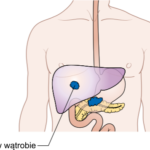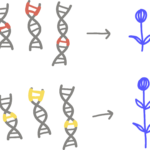Why Is It Difficult to Diagnose Autism?

In the intricate tapestry of neurodevelopmental disorders, autism stands out as a complex puzzle, challenging both experts and families alike thus the question: Why Is It Difficult to Diagnose Autism? Because it is characterized by a spectrum of symptoms, ranging from mild to severe, and often accompanied by other conditions such as intellectual disabilities or sensory sensitivities
Imagine a condition where the mind dances to its own rhythm, where communication and social interaction follow unique patterns Why do Autistic Children Become Nonverbal
Diagnosing autism is akin to deciphering a cryptic code, with symptoms that vary widely in presentation and intensity
Yet, amidst the complexity, there is hope. By understanding the nuances of autism diagnosis, we can improve our ability to recognize early signs, facilitate early intervention, and provide support to those affected.
Through awareness, education, and research, we can unravel the mysteries of autism and pave the way for a more inclusive and understanding society.
Join us on a journey of discovery as we delve into the challenges of diagnosing autism. Together, let us unravel the complexities of this condition, advocate for early screening and intervention, and support individuals and families affected by autism.
The journey begins with awareness, and with your support, we can make a difference in the lives of those touched by autism.
The importance of early autism diagnosis
In the intricate landscape of neurodevelopmental disorders, early diagnosis of autism spectrum disorder (ASD) emerges as a pivotal determinant for optimized therapeutic interventions and improved long-term outcomes.
Challenges in diagnosing autism
Navigating the labyrinth of autism diagnosis poses multifaceted challenges, encompassing the complexity of symptomatology, the diversity of presentation across individuals, and the barriers inherent in the diagnostic process.
Understanding Autism
Definition of autism spectrum disorder (ASD)
Autism spectrum disorder encapsulates a spectrum of neurodevelopmental conditions characterized by persistent deficits in social communication and interaction, alongside restricted and repetitive patterns of behavior, interests, or activities.
Core characteristics of ASD
The core features of ASD manifest across domains of social communication, including impairments in reciprocal social interaction, deficits in nonverbal communication, and challenges in developing and maintaining relationships.
Variability and complexity of autism presentation
The heterogeneous nature of autism spectrum disorder underscores its varied presentation, ranging from profound impairments in social interaction and communication to subtler manifestations that may go unnoticed or be attributed to other factors.
Early Signs and Symptoms
Early developmental milestones
The journey toward autism diagnosis often commences with observations of atypical developmental trajectories, marked by delays or deviations from typical milestones in areas such as social reciprocity, language acquisition, and motor skills.
Red flags for autism in infancy and toddlerhood
In the early stages of development, indicators of autism may manifest as early as infancy, encompassing diminished social responsiveness, absence of babbling or gesturing, and a lack of interest in social stimuli.
Challenges in recognizing early signs
The subtlety and variability of early signs pose challenges for timely recognition, with manifestations often obscured by individual differences in temperament, cultural norms, and co-occurring developmental factors.
Diagnostic Criteria for Autism
Diagnostic and Statistical Manual of Mental Disorders (DSM-5) criteria
The DSM-5 provides a standardized framework for diagnosing autism spectrum disorder, delineating specific criteria related to social communication deficits, restricted interests or repetitive behaviors, and the severity of impairment across these domains.
Comprehensive evaluation by healthcare professionals
A comprehensive diagnostic evaluation, comprising structured observations, developmental assessments, and thorough medical history-taking, is essential for accurate diagnosis and formulation of individualized intervention plans.
Differentiating between autism and other developmental disorders
Distinguishing autism from other developmental conditions necessitates meticulous assessment to discern the unique constellation of symptoms and features characteristic of ASD, while considering potential comorbidities and overlapping phenotypes.
Challenges in Diagnosis Across the Lifespan
Diagnosis in young children
The diagnostic process in young children necessitates sensitivity to age-appropriate behaviors, utilization of validated screening tools, and consideration of developmental trajectories to distinguish transient delays from persistent deficits indicative of autism.
Diagnosis in adolescents and adults
Diagnosing autism in adolescence and adulthood presents distinct challenges, as compensatory strategies, camouflage behaviors, and the masking of symptoms may obscure underlying difficulties, necessitating specialized assessment approaches tailored to the individual’s developmental stage and context.
Gender differences in autism diagnosis
Gender disparities in autism diagnosis underscore the importance of recognizing diverse presentation patterns across genders, with females often exhibiting subtler symptoms, camouflaging behaviors, and facing under-identification or misdiagnosis due to gender-specific biases in diagnostic criteria and referral pathways.
Role of Healthcare Providers in Diagnosis
Importance of multidisciplinary assessment teams
Multidisciplinary collaboration among healthcare professionals, including pediatricians, psychologists, speech-language pathologists, and developmental specialists, facilitates comprehensive assessment and holistic understanding of the individual’s strengths, challenges, and support needs.
Challenges in accessing specialized diagnostic services
Limited access to specialized diagnostic services, exacerbated by geographic disparities, long wait times, and resource constraints, poses barriers to timely diagnosis and intervention, particularly for underserved populations and those residing in remote or rural areas.
Improving healthcare provider awareness and training
Enhancing healthcare provider awareness and training in autism diagnosis entails ongoing professional development, dissemination of evidence-based guidelines, and cultivation of cultural competence to ensure equitable access to timely and accurate diagnosis across diverse populations.
Barriers to Early Diagnosis
Lack of awareness among parents and caregivers
Limited awareness of early signs and symptoms of autism among parents and caregivers, compounded by misconceptions, stigma, and cultural beliefs, may impede timely recognition and prompt referral for diagnostic evaluation.
Limited access to diagnostic services
Inequities in access to diagnostic services, stemming from systemic barriers, financial constraints, and inadequate healthcare infrastructure, contribute to delays in diagnosis and exacerbate disparities in autism identification and intervention.
Cultural and linguistic factors impacting diagnosis
Cultural variations in beliefs, attitudes, and perceptions of neurodevelopmental disorders influence help-seeking behaviors, diagnostic interpretations, and acceptance of autism-related interventions, necessitating culturally sensitive approaches to assessment and support.
Advancements in Autism Diagnosis
Development of screening tools and questionnaires
Advancements in screening tools and questionnaires, such as the Modified Checklist for Autism in Toddlers (M-CHAT) and the Social Communication Questionnaire (SCQ), enhance early detection efforts and facilitate systematic screening in diverse settings.
Biomarkers and genetic testing for autism
Emerging research on biomarkers and genetic markers associated with autism spectrum disorder holds promise for advancing diagnostic precision, identifying subtypes of autism, and informing personalized treatment approaches tailored to the individual’s genetic profile.
Role of technology in improving diagnostic accuracy
Innovations in technology, including artificial intelligence (AI), machine learning algorithms, and wearable sensors, offer novel avenues for augmenting diagnostic accuracy, automating data analysis, and capturing real-time behavioral indicators of autism.
Impact of Late Diagnosis
Missed opportunities for early intervention
Delayed diagnosis of autism results in missed opportunities for early intervention, depriving individuals of critical support services, educational resources, and therapeutic interventions during a pivotal window of neuroplasticity and developmental plasticity.
Increased risk of mental health challenges and social difficulties
Late diagnosis of autism amplifies the risk of mental health challenges, including anxiety, depression, and low self-esteem, stemming from prolonged struggles with social communication, peer relationships, and identity formation amidst undiagnosed neurodevelopmental differences.
Importance of ongoing support for individuals diagnosed later in life
Acknowledging and addressing the unique needs of individuals diagnosed later in life necessitates tailored interventions, psychosocial support, and community resources to foster resilience, self-advocacy, and empowerment in navigating the complexities of autism across the lifespan.
Parent and Caregiver Perspectives
Experiences of navigating the diagnostic process
Parent and caregiver narratives illuminate the emotional journey of navigating the diagnostic process, encompassing the initial recognition of atypical behaviors, the quest for answers and validation, and the pursuit of support services and interventions for their child with autism.
Challenges in accessing services and support
Parental perspectives underscore the multifaceted challenges in accessing timely diagnosis, specialized services, and inclusive educational environments, amidst systemic barriers, long waitlists, and disparities in healthcare access and insurance coverage.
Advocacy efforts for early diagnosis and intervention
Parent-driven advocacy initiatives play a pivotal role in raising awareness, promoting early screening, and advocating for policy reforms to enhance autism diagnosis, intervention, and inclusion across healthcare, education, and community settings.
Addressing Disparities in Diagnosis
Racial and ethnic disparities in autism diagnosis
Racial and ethnic disparities in autism diagnosis underscore the importance of addressing systemic inequities, combating diagnostic biases, and promoting culturally competent assessment practices to ensure equitable access to timely diagnosis and intervention for all individuals.
Socioeconomic factors impacting access to diagnosis and services
Socioeconomic disparities in access to autism diagnosis and services, rooted in structural inequalities, financial constraints, and resource allocation, underscore the imperative for targeted interventions, community partnerships, and policy initiatives to address the social determinants of health and mitigate barriers to care.
Strategies for reducing disparities and improving equity in autism diagnosis
Implementing strategies to reduce disparities in autism diagnosis requires a multifaceted approach, encompassing targeted outreach and education initiatives, expansion of culturally responsive services, and advocacy for policy reforms aimed at promoting health equity and social justice.
Improving Early Detection Efforts
Importance of early screening and monitoring
Early screening and monitoring initiatives play a crucial role in facilitating timely identification of autism spectrum disorder, enabling prompt referral for diagnostic evaluation, and initiating early intervention services to optimize developmental outcomes and quality of life.
Educating parents, caregivers, and healthcare providers about early signs
Empowering parents, caregivers, and healthcare providers with knowledge about early signs and red flags for autism facilitates proactive identification, prompt referral, and collaborative decision-making in navigating the diagnostic process and accessing support services.
Promoting early intervention services for at-risk children
Early intervention services, including applied behavior analysis (ABA), speech therapy, and occupational therapy, offer evidence-based interventions tailored to the unique needs of children with autism, fostering skill acquisition, social inclusion, and family engagement from an early age.
Future Directions in Autism Diagnosis
Research on early markers and predictors of autism
Advancements in neuroscience, genetics, and developmental psychology hold promise for identifying early markers and predictors of autism spectrum disorder, enabling targeted interventions and personalized treatment approaches informed by individual risk profiles and neurobiological signatures.
Advances in neuroimaging and genetic studies
Innovations in neuroimaging techniques, such as functional magnetic resonance imaging (fMRI) and diffusion tensor imaging (DTI), alongside genetic studies, offer insights into the neural underpinnings of autism, elucidating the complex interplay of genetic, environmental, and neurobiological factors shaping the developmental trajectory of ASD.
Personalized medicine approaches to autism diagnosis and treatment
The advent of personalized medicine approaches, encompassing genomic profiling, biomarker analysis, and targeted interventions, heralds a paradigm shift toward precision diagnostics and tailored therapeutics, aimed at optimizing outcomes and enhancing the quality of life for individuals with autism spectrum disorder.
Conclusion
Navigating the labyrinth of autism diagnosis entails grappling with multifaceted challenges, spanning the complexity of symptomatology, the diversity of presentation, and the systemic barriers inherent in the diagnostic process.
In light of the formidable challenges in diagnosing autism, a concerted call to action emerges, urging stakeholders across healthcare, education, and community settings to prioritize awareness, early screening, and equitable access to diagnostic services to ensure timely identification, intervention, and support for individuals with autism spectrum disorder.









